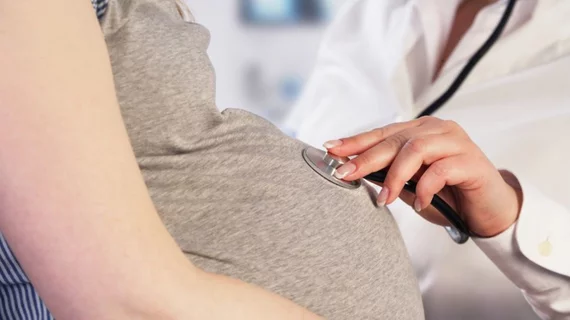CT usage during pregnancy increased over past 21 years in US, Canada
The use of CT scanning during pregnancies has risen sharply over the past 21 years, according to a new analysis of imaging utilization in the U.S. and Ontario, Canada. But overall, usage of modalities requiring ionizing radiation has declined over the past 10 years.
Researchers analyzed more than 2.2 million women and a total of 3.5 million live births that took place between 1996 and 2016 in the study published July 24 in JAMA Network Open. Over that period, the rates of CT usage increased nearly four-fold in the U.S. and doubled in Ontario, according to co-lead author Marilyn L. Kwan, PhD, with Kaiser Permanente’s Northern California Division of Research.
"This study has given us a chance to look more closely at the use of advanced imaging in pregnancy," Kwan said, in a prepared statement. "It's important to quantify exposure to ionizing radiation because it can cause cancer and birth defects and should be kept to a minimum, especially during pregnancy."
It is agreed upon that ionizing radiation from imaging can be harmful to a developing fetus, and, the authors noted, its potential dangers should be carefully considered when discussing the risks and benefits to the patient.
Kwan and colleagues retrospectively analyzed data from 2,211,789 women included in the 7 Radiation-Induced Cancers Study. Patients included pregnant women who were enrolled in one of six health care systems for their entire pregnancy across the U.S. and Ontario, Canada.
They tracked the combined use of advanced imaging, including CT scans, x-rays, angiography/fluoroscopy, nuclear medicine and MRIs.
Overall, 5.3% of pregnant women in the U.S. sites and 3.6% in Ontario received imaging with radiation; CT (0.8% in the U.S. and 0.4% in Ontario) and radiography (4.6% in the U.S. and 3.1% in Ontario) were the primary modalities used during the study period.
During the 21-year study, CT rates jumped 3.7-fold in the U.S. and 2-fold in Ontario; Usage of the other modalities requiring ionizing radiation decreased over that time. MRI use, however, increased during the study period.
Kwan and colleagues attributed the increased utilization to multiple factors, including advances in imaging technology, patient- and physician-generated demand, defensive medical practices and medical uncertainty.
"Always, but especially if you're pregnant, you should ask whether it is really medically necessary to have any imaging test that involves ionizing radiation," said senior author Rebecca Smith-Bindman, MD, radiology professor at University of California, San Francisco, in the same release. "If advanced imaging is needed, ask your doctor if you can have another imaging test that doesn't involve exposure to ionizing radiation, such as MRI or ultrasound."
Finally, the authors concluded, despite the overall shift toward limiting radiation exposure observed over the past 10 years, continually monitoring imaging rates in pregnant women is important to avoid unnecessary testing and radiation exposure to the fetus.

